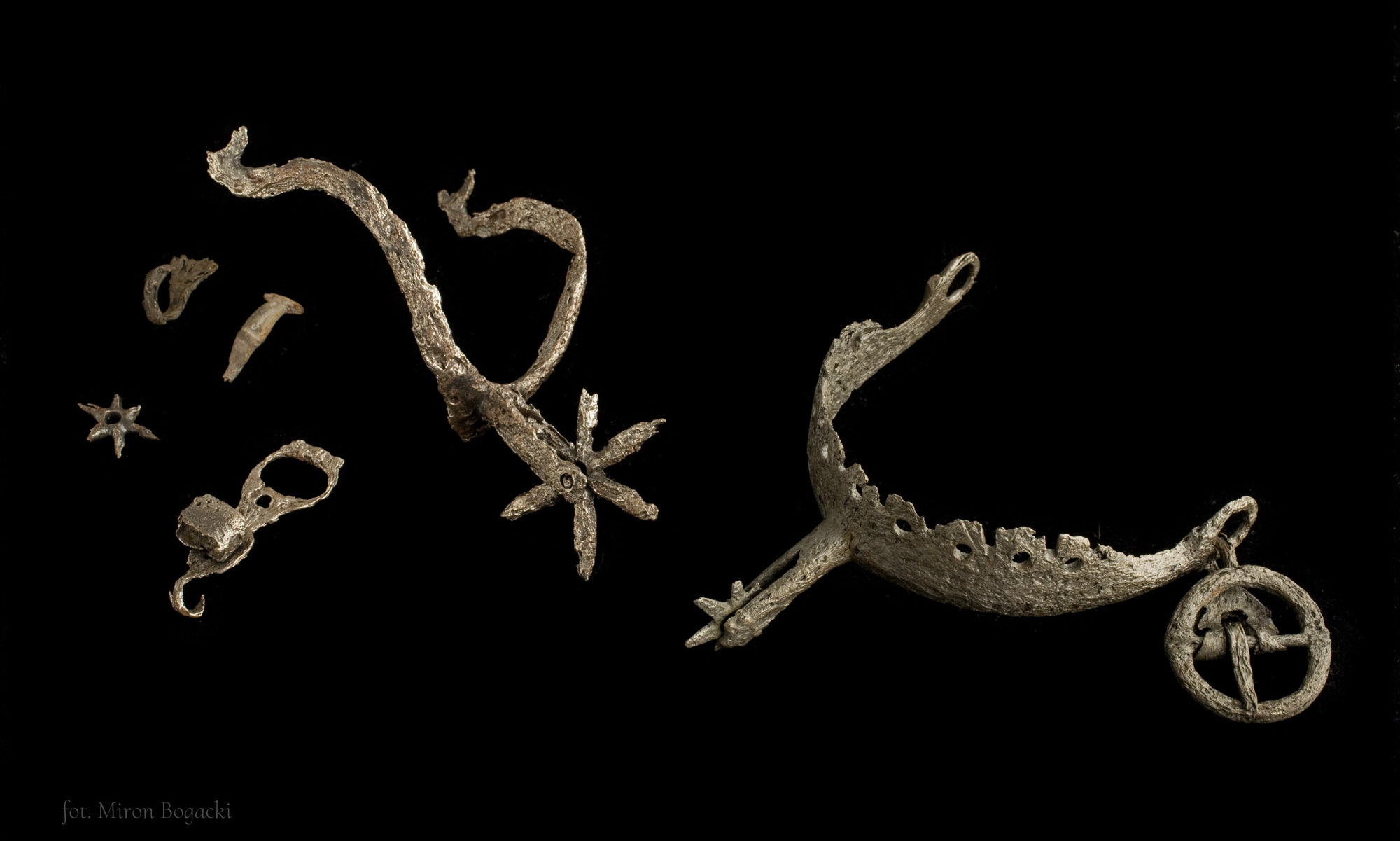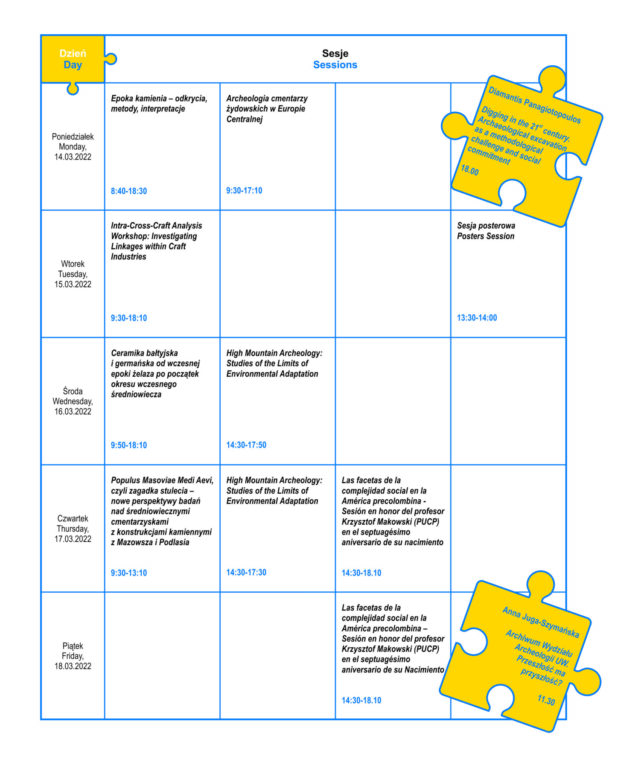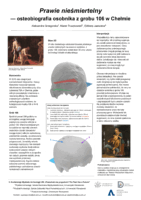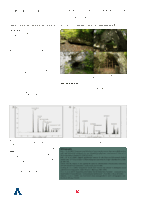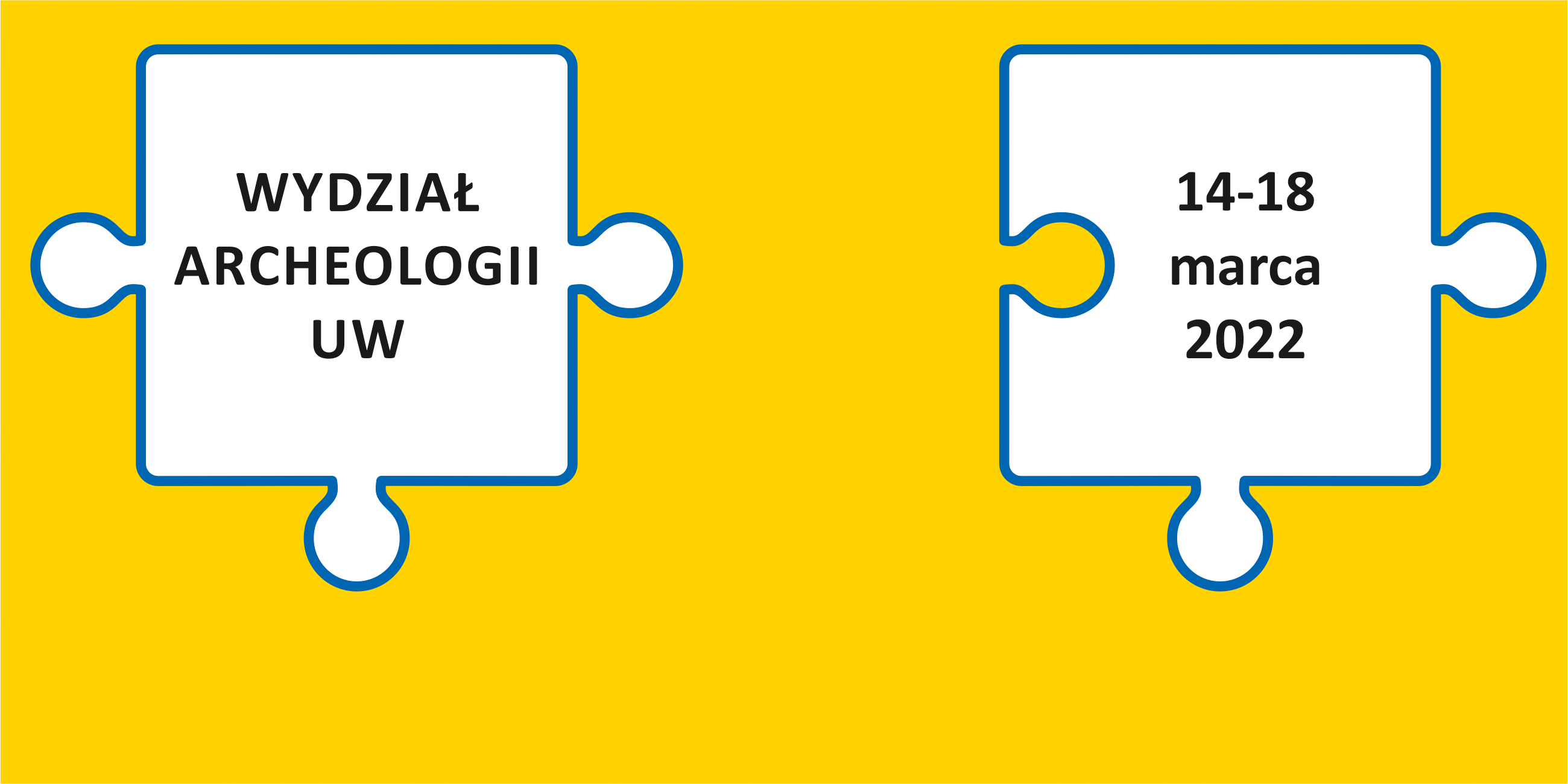
Ladies and Gentlemen, Dear Colleagues!
We would like to invite you to participate in the Conference of the Faculty of Archaeology ‘Przeszłość ma przyszłość!/ The Past Has a Future!’, which will take place, in a hybrid format at the Faculty of Archaeology, University of Warsaw (Poland) and online on March 14th-18th, 2022. It is both a national and international event reflecting the general motto of the Faculty: The Past Has a Future! Around this motto, colleagues from the Faculty of Archaeology UW together with their collaborators plan to organise 7 sessions and workshops devoted to specific thematic fields in archaeology. Please find below the list of the sessions and workshops.
Traditionally, on the first day of the conference (March 14th, 2022) at 6:00PM there will be an open public lecture (in English), prepared this year by prof. Diamantis Panagiotopoulos from the University of Haidelberg.
In addition, an accompanying lecture (in Polish) is planned, dedicated to the archives of the Faculty of Archeology of the University of Warsaw, which will be given by dr. Anna Juga-Szymańska.
The list of the sessions and workshops:
- Stone Age – Discoveries, Methods, Interpretations (in Polish)
- Archaeology of Jewish Cemeteries in Central Europe (mostly in Polish)
- Intra-Cross-Craft Analysis Workshop: Investigating Linkages within Craft Industries (in English)
- Baltic and Germanic Pottery from the Early Iron Age to the beginning of the Early Middle Ages (in Polish)
- High Mountain Archeology: Studies of the Limits of Environmental Adaptation (in English and Spanish)
- Populous Masoviae Aevi or the Puzzle of the Century – New Research Perspectives on Medieval Cemeteries with Stone Structures from Mazovia and Podlasie (in Polish)
- Las facetas de la complejidad social en la América precolombina – Sesión en honor del profesor Krzysztof Makowski (PUCP) en el septuagésimo aniversario de su Nacimiento (in Spanish)
For more details, please see the Conference page in Polish.
To register for a session, please visit the webpage of the session and register using a registration form. A link to the event will be sent automatically.
Detailed conference schedule and book of abstracts – please click on the picture!
The conference was co-financed under the program “Excellence Initiative – Research University”.

Diamantis Panagiotopoulos (Heidelberg University, Germany)
Digging in the 21st century. Archaeological excavation as a methodological challenge and social commitment
What started as a self-evident procedure of recovering ancient remains during the great archaeological ‘expeditions’ of the 19th century evolved over time to a complex multi-analytical venture that currently determines on a hitherto unprecedented scale the way(s) in which we strive to understand ancient realities. Excavation is not just an inevitable scientific practice but the most crucial tool of our discipline, since the most reliable production of archaeological knowledge is mainly determined by on-site observations rather than desk-based assessments. Therefore, digging in the 21st century poses a huge challenge for archaeologists who seek to maintain the right balance between traditional and digital methods of documentation or – more important still – between their own intellect and artificial intelligence. Yet, this is only one side of the coin. Today, more than ever, archaeology has to be an open and applied discipline with the potential to play a decisive role in current discourses at the juncture of society, politics, economy, and science. Therefore, beyond their purely scientific tasks, excavators have to meet their social or regional responsibilities, enhancing the social dimension of our discipline as a public good.
[contact-form-7 id=”19275″ title=”Prof. Diamantis PanagiotopoulosDigging in the 21st century. Archaeological excavation as a methodological challenge and social commitment – Keynote Public Lecture”]
Organiser: Stephanie Aulsebrook (Faculty of Archaeology, University of Warsaw)
Session Form: Hybrid
Date: 15.03.2022
Studying past production through cross-craft interaction has enabled a much better understanding of the linkages between different industries and their impact. Such connections may encompass shared tools and facilities, motifs and styles, materials, techniques, skills and knowledge, and strategies of procurement and distribution. Their identification has helped archaeologists to reconstruct previously inaccessible processes in past production, revealing, for example, mechanisms that generated innovation through information exchange or elements of craft organisation.
However, many industries are in fact a collection of multiple crafts, and objects considered the product of one industry are often produced through the skill and labour of more than a single individual, each of whom brings with them specialist knowledge and techniques. ‘Metallurgy’, ‘jewellery manufacture’, ‘textile production’ or ‘carpentry’ are all good examples of umbrella terms that mask the diversity of crafts that were often used side-by-side to create the final product. Applying the cross-craft analysis framework within industries, through intra-cross-craft analysis, enables these intra-craft interactions to be recognised and investigated.
The aim of the workshop is to promote the use of intra-cross-craft analysis as a research framework more widely, by bringing together a diverse group of researchers working on past craft production to discuss its implications. A call for expressions of interest elicited responses from specialists in Europe and the US on metals, ceramics, textiles, stone and jewellery, from the Bronze Age to the Industrial Revolution. The importance of integrating experimental and experiential archaeology into the intra-cross-craft approach will be highlighted through the inclusion of demonstrations.
Detailed Session Schedule – here.
Abstracts:
Vasiliki Anevlavi (Austrian Archaeological Institute, Austrian Academy of Sciences, University of Salzburg, Austria)
Marble Extraction and its Industry. Case Studies of White Marble Quarries throughout Antiquity
Quarries are the primary contexts, the first stage of each object. Studying the tool marks, the imprints on the parent rock, the waste, and the unfinished objects at a quarry reveal the secrets of the precision work which was conducted in these locations. The abandoned objects in combination with the waste, give valuable information about the context, the organization of each quarry as well as the manufacturing process, the transportation and the stone trade in antiquity.
Each group of objects, in many cases, uses different quality materials, production tools, workmen and various steps during the pre-shaping of each item. The extent of the scattered pieces in a quarry can show the large size of the quarries. An example where pieces are gathered in one spot can be the indication of a pick-up location or the place of the exit/entrance of the quarry. A characteristic example is the Abu-Hayat Roman quarry near Ephesos, which has recently been studied. Five semi-worked blocks can be observed all orientated in one direction, possibly ready for transportation. Meanwhile, new studies on the island of Tinos have revealed numerous tool marks, in combination with special graffiti and inscriptions, and help us to have a better understanding of the ancient marble industry in the Cycladic Islands.
The studies of these examples not only extend the marble landscape of each area from both a topographical-archaeological viewpoint, but they are also examples of the usage of marbles with particular qualities, extraction methods and productions.
Stephanie Aulsebrook (Faculty of Archaeology, University of Warsaw, Poland)
Craft and Hobby? Components as a Possible Enabler of ‘Amateur’ Crafters in the Mycenaean World
Components played a significant role in the Mycenaean Palatial Period (c. 1400–1200 BC) jewellery and adornment industries. Many required great skill to make as well as specialist equipment and knowledge. Examples include the granulated hollow gold beads well-known from Mycenaean mortuary contexts. However, for certain component-based objects the last stages of their typical chaîne opératoire, their assembly process, did not require the same level of skill nor specialist equipment or knowledge that may have been difficult to access. Other factors came to the fore, such as a sense of aesthetics, patience and time; strong investment in the latter in particular would have been the key way to improve the object’s final appearance. Based on analogies with historical and modern practices, these circumstances provide a good entry point for ‘amateur’ or ‘hobby’ crafters. In the Mycenaean Palatial Period, one such component was gold foil, used to gild a range of artefacts, especially glass beads. This paper focuses on a collection of foil-covered jewellery components from chamber tombs excavated by Christos Tsountas at Mycenae, studied by Agnes Xenaki-Sakellariou. These demonstrate variable outcomes in terms of success that may indicate the presence of amateur crafters within the sphere of Mycenaean jewellery production.
Nadia Ben-Marzouk (University of Zurich, Switzerland), Giulia Tucci (Tel Aviv University, Israel)
Foreign Imitation in Local Faience Production? (Re)Assessing the Beth Shean Level IX Stamp Seal Group through Intra-Cross-Craft Analysis
This paper re-examines a previously identified group of faience seals dated to the Late Bronze Age in the southern Levant with a focus on producer identity and skill. Referred to as the Beth Shean Level IX group, these faience seals were previously interpreted as the product of local faience seal producers creating imitations of imported Egyptian scarab seals—whose base engraving was right-facing—by impressing them into faience moulds, which were then used to produce a faience scarab with a left-facing impression (Ben-Tor and Keel 2012). Similarly, the back of the scarab was produced in another faience mould, resulting in a technique that combined two separate moulds to create an Egyptian scarab imitation. However, we maintain that core elements of this proposal are fundamentally problematic. Rather, we survey the techniques, materials and stages of production, proposing a connection to metal jewellery production, which may have influenced the faience technology given the producers were likely the same individuals. The paper then situates our case study within the broader landscape of the east Mediterranean and asks whether such a model may have been true of seal producers elsewhere.
Anastasia Dakouri-Hild (University of Virginia, United States of America)
Jacks of all Trades: towards an Understanding of Cross-Craft Fertilization in the Mycenaean Ornamental Industries
The paper re-evaluates the evidence from the Kordatzi workshop in Mycenaean Thebes (mostly gold, glass and stone). First, some thought is given on what constitutes a workshop (or workshop-related material) in the Mycenaean world. Secondly, a detailed, closer look is given at the objects themselves: the paper examines interrelationships between a) same materials used for different functional categories (e.g. jewellery, weaponry, furniture components) and b) same or similar products made of different materials. Subsequently, an effort is made to interpretatively understand which chaines opératoires shared in common have to do with stylistic and iconographic dictates and which with the practicalities of working with certain materials and tools. Third, the context of the finds is scrutinized using the original excavation diaries in order to determine/confirm the spatial relationships of objects connected to workshop activity on the site. Finally, following comparison with a different workshop assemblage in the same Mycenaean settlement (House of Kadmos), some general conclusions are drawn about cross-craft fertilization in Mycenaean ornamental industries.
Katarzyna De Lellis-Danys (Polish Centre of Mediterranean Archaeology, University of Warsaw, Poland), Magdalena M. Woźniak (Polish Centre of Mediterranean Archaeology, University of Warsaw, Poland)
Intra-Cross-Craft Approach to Ceramic Spindle Whorls from Old Dongola, Sudan
In our paper, we will first explore technological interactions between two crafts: pottery making and spinning. We will then apply intra-cross-craft analysis to ceramic spindle whorls found in the households in Old Dongola (Sudan) of the 14th–18th century CE. Those finds indicate a certain knowledge of properties of used materials and possibly transfer of techniques and practice between crafts. The aim of the paper is also to understand the identity of spindle whorl-makers: specialized craftsmen, potters or spinners, as well as the character of the production of spindle whorls: industrial or home-made.
Dawn Hoffmann (Metalsmith, Maryland, United States of America )
The Metals Family Tree and their Separate Branches – the Variety of Metals: Properties, Treatments and Applications. Practical Session and Case Studies
Within the family of metalworking disciplines there are many similarities, and overlaps. However, there are enough differences of properties: malleability, ductility, melting temperature, strength and scale (of work) to warrant their own fabrication practices in individualized, unique workshop settings. Understanding these qualities can inform us of which materials, processes and tools would be best suited for the job at hand. I will show various ways of forming metals and demonstrate these different approaches needed for ferrous and non-ferrous materials showing some of the parallel and contrasting working conditions. This demonstration will introduce some dilemmas and also some of the solutions that qualities of the various metals present to the metalsmith. The various attributes of metals are also precisely the reason for using them in a intra-craft related manner. The qualities can include: aesthetics, temperature and heat conductivity, magnetism, toughness, food safety, flexibility and imperviousness (or not) to other elements and weathering. Throughout history, the family of metals have been an intriguing and practical part of the daily lives in the family of mankind.
Kyle Jazwa (Maastricht University, Netherlands)
“No Man ever Wetted Clay and then Left it:” Intra-Cross-Craft Interaction and Architectural Technologies in Mainland Greece from the Bronze Age to the Archaic Period
This paper examines the evidence for intra-cross-craft interaction in architectural construction in mainland Greece from the Bronze Age–Archaic Period. Its primary focus will be on clay architectural elements, such as mud bricks, ceramic roofing tiles and drains. Although intra-cross-craft interaction is evident in almost all aspects of building construction, these objects especially demonstrate the multi-directional transfer of skills/knowledge among builders and between builders and potters. A reconstruction of the chaînes opératoires of Early Helladic, Late Helladic, and Archaic ceramic roofing tiles, for instance, clearly demonstrates participation from potters who were mobilized for the refining of the clay and firing of the tiles, while the forming methods drew from more vernacular construction traditions, like mud brick-making and the construction of other unfired clay infrastructure. After presenting this and other evidence for intra-cross-craft interaction in architectural contexts, I demonstrate that periods with higher socio-political complexity and monumental buildings encouraged more exchange among craftsmen who otherwise worked in different realms. The greater diversity of workers cooperating within this context also coincided with noteworthy technological innovation and a receptivity to foreign architectural practices.
Florica Mățău (ARHEOINVEST Center, Department of Exact and Natural Sciences, Interdisciplinary Research Institute, Alexandru Ioan Cuza University of Iași, Romania)
Cross-craft Interactions in the Production of a Middle Bronze Age Crucible Identified in the Lower Danube Region
The Lower Danube region represents one of the most important trade routes used since early prehistory, whereby fundamental innovations and technologies were often transmitted, transformed and adapted through it. The various Middle Bronze Age groups followed different pathways with distinctive endpoints, which caused a significant degree of variability in the transmission of technological knowledge. The Danube Valley and an extended part of the Southern Plain of modern Romania were occupied by the Verbiciora culture (c. 2200/2000–1500/1400 BC), well-known for its exquisite ceramic repertoire. Besides the very diversified ceramic production, at the Verbicioara sites various gold and bronze artefacts were identified, sometimes associated with funerary contexts. Although no metal production sites were identified in the Verbicioara area, a very specific category of ceramic artefacts used in the various sequences of metal processing was reported.
This study focuses on the archaeometric analysis performed on a crucible and on ceramics identified at Rogova for tracing the degree of technological similarities between these artefacts.
Laura B. Mazow (Department of Anthropology, East Carolina University, United States of America)
Re-examining At the Fullers UET 6/2, 414 as a Dialogue between Weaver and Fuller
The completion of a fulled textile is a product of both the weaver’s and fuller’s craft as each craftperson’s work impacts the outcome of the other. For example, a common finishing technique of a weave is edge fringe, which requires special treatment so as not to felt in the fulling process. Fulling, which tightens the weave by matting the wool fibres, causes the textile to shrink. The amount of shrink, and its impact on a textile’s final shape, is dependent on wool type and sort, the tightness of both the spun yarn and the weave and the desired finish. Thus weavers and fullers, while independent specialists, must have interacted at some point along the chaîne opératoire of textile processing.
With that in mind, I suggest a revised reading of the Old Babylonian text, At the Fullers. This dialogue is not between a customer and a fuller, but between a weaver and a fuller. The weaver’s concern is the fringe. The fuller feels his expertise in shrink and stretch is not respected. As they toss insults, we gain witness to a theoretical conversation between inter-dependent craft specialists at the moment the responsibility for the product’s outcome shifts from one to the other.
Peter Northover (Independent Researcher)
How does a Workshop Work?
Archaeological evidence for Bronze Age workshops and how they might have functioned is notoriously elusive. Yes, we have moulds, crucibles, sprue and other casting waste, but little in the way of hearths and other structures, To fill the gap we have two sources of approaches. One is to pay more attention to the information contained in this metallurgical debris, but more importantly, to listen to what the metalwork itself is telling us about how it was made. The second is to study how traditional craftsmen work with copper and copper alloys but, in many cases, they are only concerned with a limited product range. An alternative to this is to look in recent centuries, say from the 17th to the 19th, where we have structural, metallurgical, and, importantly, documentary evidence. Despite first impressions, this is not anachronistic, because the metallurgy is the same, the primary difference between then and the Bronze Age is one of scale, supplemented by animal and water power.
This paper will present one example where we have very detailed records. William Forbes, a Scottish coppersmith, and brazier supplied a wide range of copper and copper alloy components to the Royal Navy in the 1770s and 1780s. When he retired he took his business archive with him and it is preserved in his mansion in Scotland. Particularly important are his ledgers and notebooks recording his metal supplies in and finished product out, his furnace notebooks recording how alloys were made up and melted and the losses in the process, and inventories of the tools and equipment in his workshops. In addition, there are his payroll, and anecdotal evidence in the form of weekly reports from one of his works managers. We can learn how the work was distributed among his workmen, how much they produced, and how much they earned (even in the Bronze Age people would not work for nothing), how long particular tasks took, and what could go wrong.
All this can be found mirrored in the Bronze Age. As a case study we can look at the hoard from Isleham, Cambridgeshire, UK, at 8000 fragments the largest in Britain. It comprises the complete metal stock of a closed-down workshop, from newly finished and part finished objects, through scrap, ingots and waste, down to the floor sweepings. The peculiar circumstances of its preservation means that some pieces are effectively uncorroded and surface traces reveal all the stages of production and finishing, the extent to which defects were tolerated and repaired, and numerous failed pieces which shed further light in the production process, and the human and natural resources needed.
A final point of comparison starts with the order and account books for the Forbes workshops. Here we can see how work was commissioned, how the resources were organised, and how the finished product was transported to the customer. We need now to consider how the same transactions were made in the Bronze Age: how work was commissioned, how the resources, including specialist supplies were obtained, and how the product was distributed and, applying the discipline of production engineering, we can start to reconstruct the different types of workshop and their networks.
Nikolas Papadimitriou (Paul and Alexandra Canellopoulos Museum, Greece), Akis Goumas (Goldsmith – Visiting Artist at the Harvard Center for Hellenic Studies, United States of America)
Interaction among Master Artisans in Early Mycenaean Times
In Early Mycenaean times, numerous daggers were made specifically for funerary display. For the manufacture of these daggers, a variety of materials (e.g. copper, gold, ivory, wood) and demanding techniques (e.g. metal inlay, gold-embroidery) were used, often on the same weapon. This necessitated the cooperation of different craftspersons. At a slightly later stage, artisans started imitating the handles of prestigious daggers in unexpected materials, e.g. glass and agate. The latter handles looked similar in form to those made of wood or ivory but were crafted with entirely different techniques. In this paper we will discuss these examples of “cross-craft interaction” (i.e. [a] the cooperation among different craftsperson working on the same dagger, and [b] the interaction among artisans making similar objects in different materials) and try to understand their implications for the organization of Early Mycenaean workshops for prestigious weapons—especially at the site of Mycenae, where these phenomena are mainly attested. Our research combines microscopic observation of the objects, archaeometric analysis and experimental reconstructions.
Nancy Serwint (Arizona State University, Tempe, Arizona, United States of America)
The Coroplast and the Potter: Considerations on Cross-Craft Specialists
Coroplastic studies is a vibrant area of research among material culture specialists dealing with the ancient world. With terracotta sculpture ranging in size from miniature to over life-size, various techniques were employed in the crafting of distinctive products. Use of clay demanded facility with the hands as well as the employment of other technical devices. It is clear from the study of how terracotta sculpture was made that many of the techniques used for fashioning objects were similar to those employed by potters. The votive terracotta sculpture discovered at ancient Marion, one of the city kingdoms of Cyprus during the Iron Age, will form the basis of the presentation. With a corpus of over 30,000 fragments, the material represents the largest cache of sculpture in clay from a single site on the island. Local production is assumed from the volume of the material as well as the presence of nearby clay sources. Detailed assessment of manufacturing strategies reveals production affinities with various stages of clay procurement methods, techniques for material preparation and the utilization of various formation practices including hand building, coil and slab construction and use of the wheel—all schema shared by both coroplasts and potters.
Agata Ulanowska (Faculty of Archaeology, University of Warsaw, Poland)
How many Flax Seeds for a Shirt? Textile Production in Bronze Age Greece from an Intra-Cross-Craft Perspective
The key socio-economic importance of textile production in Bronze Age Greece was, i.a., related to the exceptional complexity of its chaîne opératoire and large labour inputs. All basic operational sequences, such as processing raw materials (e.g. plant cultivation and animal husbandry), fibre processing, forming yarns, dyeing and making textiles required entirely different skills, knowledge and production strategies. Since, overall, textile tasks are also very time-consuming and many have to be performed continuously (e.g. spinning), textile manufacturing was not only visible in everyday life, but it had to accompany and frame other activities and crafts. The now defined concept of intra-cross-craft interaction has, therefore, been naturally applied to examine textile production and technology well before its conceiving. However, due to a limited number of excavated textiles, it has not been applied to examine specific finished products. In this paper, by presenting a brief overview of the intra-cross-craft nature of textile manufacture in the Aegean Bronze Age, I will also highlight the limitations of this approach resulting from gaps in the evidence, especially in relation to the final products, i.e. textiles.
[contact-form-7 id=”19281″ title=”Intra-Cross-Craft Analysis Workshop: Investigating Linkages within Craft Industries”]
Serdecznie zapraszamy na sesję posterową, która odbędzie się online za pośrednictwem platformy Zoom we wtorek 15.03.2022 r. w godz. 13:30-14:00.
We invite you to the poster session, which will be held online by Zoom Meetings on Tuesday, March 15, 2022, from 1: 30 PM to 2: 00 PM.
Podczas spotkania będzie możliwość zadania pytań badaczom. / During the meeting, you will be able to ask questions to the researchers.
Link: https://us02web.zoom.us/j/87595738195?pwd=Tld0R1BVM0MyZjdNSE9WUHR1UzVIZz09
Abstrakty/ Abstracts:
Postery można przeczytać klikając na obrazek. / Click on the image to read posters.
Aleksandra Grzegorska (Wydział Archeologii, Szkoła Doktorska Międzydziedzinowa, Uniwersytet Warszawski, Polska), Marek Truszkowski (Wydział Archeologii, Szkoła Doktorska Nauk Humanistycznych, Uniwersytet Warszawski, Polska), Elżbieta Jaskulska (Wydział Archeologii, Uniwersytet Warszawski, Polska)
Osteobiografia osobnika z grobu 106 w Chełmie
W 2015 roku podczas ratowniczych prac wykopaliskowych prowadzonych przy ul. Lubelskiej 72A w Chełmie odkryto pozostałości cmentarza o nieznanej afiliacji. Na podstawie zabytków archeologicznych określono, że był użytkowany między XIII a XVIII wiekiem.
Spośród wszystkich grobów odkrytych na stanowisku na szczególną uwagę zasługuje grób 106, w którym znajdowały się zmieszane kości ludzkie, w tym nosząca nietypowe zmiany czaszka należąca do dorosłego mężczyzny. Na tylnej części czaszki, na kości potylicznej, widoczne były ślady po trzykrotnym ugodzeniu ostrym narzędziem (być może mieczem bądź szablą). Nie są to jedyny ślady agresji międzyosobniczej widoczne na szczątkach osobnika z grobu 106. Na prawej kości ciemieniowej widoczne jest wgłębienie będące pozostałością po uderzeniu.
W celu odtworzenia osteobiografii mężczyzny z grobu 106, oprócz analizy osteologicznej skorzystaliśmy z możliwości nowych technologii. Czaszka została zeskanowana na Wydziale Archeologii. Na skanie 3D urazy czaszki były lepiej widoczne dzięki czemu można było prześledzić ich dokładny przebieg oraz ocenić kąt pod jakim padły ciosy.
Plakat ma na celu zaprezentowania wyników badań dotyczących osobnika z grobu 106. Pokazane zostanie, jak skany 3D wykorzystywane są w badaniach osteologicznych, i jak pomagają odpowiedzieć na zadawane przez bioarcheologów pytania.
Natalia Gryczewska (Wydział Archeologii, Szkoła Doktorska Międzydziedzinowa, Uniwersytet Warszawski, Polska)
Tracing human activity in caves of Polish Jura with the use of lipid biomarkers
Polish Jura, a karstic region located in southern Poland, has a long history of archaeological research. Starting from the XIXth century, caves located there were explored by amateur archaeologist and exploited by local owners who sold cave sediments as a field fertilizer. Even though several important cave sites lost their uppermost layers of sediments or were thoroughly excavated for many years, Jura is still the key region for understanding the Palaeolithic human activity in Poland. However, the state of research calls for new methods that would help gaining results that could enhance our understanding of the complexity of ancient human presence and behaviour in cave sites as well as the context of it.
The poster aims at introducing a new project, focused on exploring the possibilities of using selected lipid biomarkers- -sterols and bile acids- to reconstruct past human activity in caves of Polish Jura. Main objective of the study is to analyse sterols and bile acids in soil samples from stratigraphic sequences of selected Polish cave sites. These compounds, called “faecal sterol” have been for years successfully applied in various archaeological context, but rarely in caves.
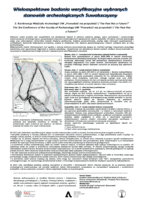 Iwona Lewoc (Studium Doktoranckie przy Wydziale Nauk o Kulturze i Sztuce, Uniwersytet Warszawski, Fundacja Terra Desolata, Polska), Michał Pisz (Wydział Geologii, Uniwersytet Warszawski, Polska)
Iwona Lewoc (Studium Doktoranckie przy Wydziale Nauk o Kulturze i Sztuce, Uniwersytet Warszawski, Fundacja Terra Desolata, Polska), Michał Pisz (Wydział Geologii, Uniwersytet Warszawski, Polska)
Wieloaspektowe badania weryfikacyjne wybranych stanowisk archeologicznych Suwalszczyzny
Obecna doktryna konserwatorska zakłada wykorzystanie nowoczenych metod nieiwazyjnych w celu lepszego rozpoznania, oceny stanu zachowania, zadokumentowania oraz weryfikacji wcześniejszych ustaleń dotyczących stanowisk archeolgicznych wpisanych do rejestru, przy jednoczesnym ograniczeniu metod destrukcyjnych.
Realizowany w latach 2021–2022 projekt zakłada weryfikację pięciu stanowisk archeologicznych związanych z osadnictwem bałtyjskim na Suwalszczyźnie. Zostały one wytypowane w wyniku konsultacji z pracownikami Narodowego Instytutu Dziedzictwa oraz Wojewódzkiego Urzędu Ochrony Zabytków Delegatura w Suwałkach. W projekcie uwzględniono kompleks osadniczy w Osowej, stan. 1 i 2, osadę w Krzywólce, stan. 3, kurhany i grodzisko w Dzierwanach, stan. 1 i 5. Pierwszy etap prac zakładał weryfikację osiedla oraz cmentarzyska kurhanowego w Osowej.
Na posterze przedstawione zostaną: krótka charakterystyka poszczególnych stanowisk, wstępne wyniki badań przeprowadzonych w 2021 roku oraz informacje na temat prac zaplanowanych na kolejny rok.
Projekt dofinansowano ze środków Ministra Kultury, Dziedzictwa Narodowego i Sportu pochodzących z Funduszu Promocji Kultury, uzyskanych z dopłat ustanowionych w grach objętych monopolem państwa, zgodnie z art. 80 ust. 1 ustawy z dnia 19. listopada 2009 r. o grach hazardowych.
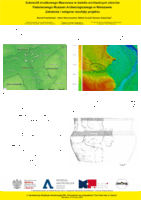 Michał Przeździecki (Wydział Archeologii, Uniwersytet Warszawski, Polska), Adam Wawrusiewicz (Muzeum Podlaskie w Białymstoku, Polska), Barbara Sałacińska (Państwowe Muzeum Archeologiczne w Warszawie, Polska), Witold Grużdź (Państwowe Muzeum Archeologiczne w Warszawie, Polska)
Michał Przeździecki (Wydział Archeologii, Uniwersytet Warszawski, Polska), Adam Wawrusiewicz (Muzeum Podlaskie w Białymstoku, Polska), Barbara Sałacińska (Państwowe Muzeum Archeologiczne w Warszawie, Polska), Witold Grużdź (Państwowe Muzeum Archeologiczne w Warszawie, Polska)
Subneolit środkowego Mazowsza w świetle archiwalnych zbiorów Państwowego Muzeum Archeologicznego w Warszawie. Założenia i wstępne rezultaty projektu
Obszary środkowego Mazowsza przez dziesięciolecia pozostawały poza głównym zakresem zainteresowań badaczy zajmujących się problematyką neolitu, a w szczególności dominujących tu ugrupowań subneolitycznych łączonych z różnie definiowanymi zjawiskami kulturowymi – „kultura ceramiki grzebykowo-dołkowej typu Linin”, „horyzont lininski”, „kultura niemeńska”, czy w końcu „niemeński krąg kulturowy”. Tereny te, to także przestrzeń styk dwóch odrębnych kulturowo i środowiskowo regionów – pozostających, z jednej strony pod wpływem „klasycznych” ugrupowań neolitu agrarnego Europy Zachodniej, z drugiej zaś stanowiących dominium ostatnich ugrupowań łowiecko-zbierackich.
Prezentowany projekt jest próbą kompleksowej analizy stanowisk związanych z obecnością społeczności subneolitycznych na interesującym nas obszarze.
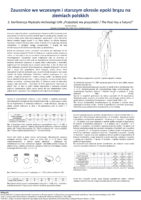 Karolina Rataj (Wydział Archeologii, Szkoła Doktorska Nauk Humanistycznych, Uniwersytet Warszawski, Polska)
Karolina Rataj (Wydział Archeologii, Szkoła Doktorska Nauk Humanistycznych, Uniwersytet Warszawski, Polska)
Zausznice we wczesnym i starszym okresie epoki brązu na ziemiach polskich
Na przestrzeni I i II OEB społeczności różnych kultur stosowały rozmaite kategorie ozdób, od ozdób rąk i nóg jak bransolety czy pierścionki, przez dekoracje szyi takie jak naszyjniki i wieloelementowe kolie, po różnego rodzaju aplikacje naszywane na elementy stroju, preferując ich konkretne typy. Pozwalało im to konstruować swoją tożsamość, sygnalizować zajmowaną przez jednostkę pozycję społeczną, płeć, przynależność do określonej grupy i determinowało jej odbiór.
Jednymi z najpopularniejszych ozdób, które występowały w grobach w badanym odcinku czasu, na ziemiach polskich, są zausznice. Wykonywane z brązu, miedzi, złota lub srebra służyły jako dekoracja głowy, zarówno kobiet, jak i mężczyzn. Różne kultury, na różnym obszarze, stosowały rozmaite odmiany takich ozdób. Z jednej strony pojawiają się formy uniwersalne, o rozległym zasięgu występowania, z drugiej zaś typy charakterystyczne dla konkretnych obszarów czy danej kultury jak np. zausznice o jednym końcu zwiniętym w spiralkę charakterystyczne dla kultury strzyżowskiej. Celem prezentowanych badań jest próba prześledzenia jakie formy zausznic są stosowane przez konkretne kultury w danych okresach na ziemiach polskich, które odmiany dominują w grobach, a także czy istnieją formy przypisane do konkretnej płci.
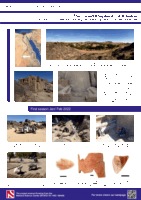 Karel Innemée (Wydział Humanistyczny, Uniwersytet w Amsterdamie, Królestwo Niderlandów), Cristobal Calaforra-Rzepka (Badacz niezależny, Polska), Dobrochna Zielińska (Wydział Archeologii, Uniwersytet Warszawski, Polska)
Karel Innemée (Wydział Humanistyczny, Uniwersytet w Amsterdamie, Królestwo Niderlandów), Cristobal Calaforra-Rzepka (Badacz niezależny, Polska), Dobrochna Zielińska (Wydział Archeologii, Uniwersytet Warszawski, Polska)
“Dobry Pasterz” z Misejda. Obraz w kontekście zmieniającego się krajobrazu kulturowego Trzeciej Katarakty Nilu
Kościół w Misejda został zarejestrowany w ramach prac powierzchniowych rejonu Mahas na obszarze Trzeciej Katarakty Nilu. Niezwykłość tej budowli polega na tym, że głównym wizerunkiem sanktuarium jest ryt naskalny z czasów przedchrześcijańskich, który najwyraźniej został zreinterpretowany jako przedstawienie Chrystusa.
Jak się wydaje, sam petroglif ze względu na swój monumentalny charakter, przypominający reliefy świątynne, miał istotne znaczenie dla ówczesnego społeczeństwa. Został umieszczony w rejonie granicznym pomiędzy Nubią Dolną a Górną, który przez wieki historii tego regionu miał znaczenie polityczne i administracyjne, o czym świadczą znaleziska z pobliskiego Tombos.
Ryt naskalny, jak i miejsce, w którym go wykonano, a potem zbudowano kościół, są świadectwem zmian politycznych oraz religijnych w tym regionie i te będą przedmiotem badań.
Projekt otrzymał dofinansowanie NCN (2019/35/B/HS3/02440) zaraz po wybuchu pandemii Covid-19, co znacząco wpłynęło na opóźnienie i ograniczenie dotychczasowych prac badawczych. Mimo tego, jak i niestabilnej sytuacji w Sudanie, do tej pory udało się zorganizować dwa sezony prac terenowych.
